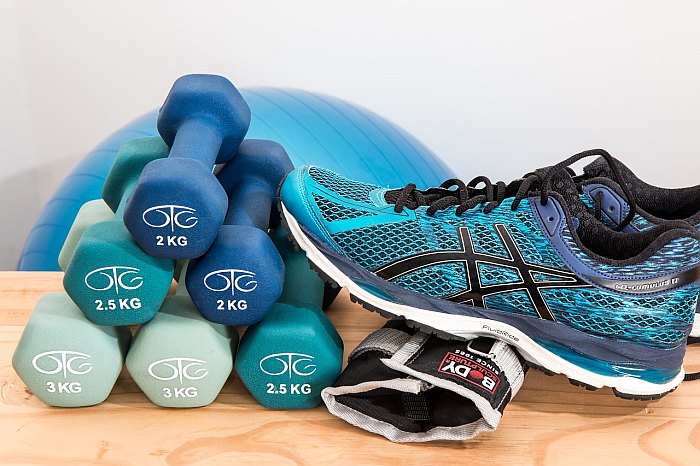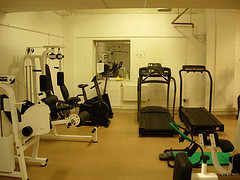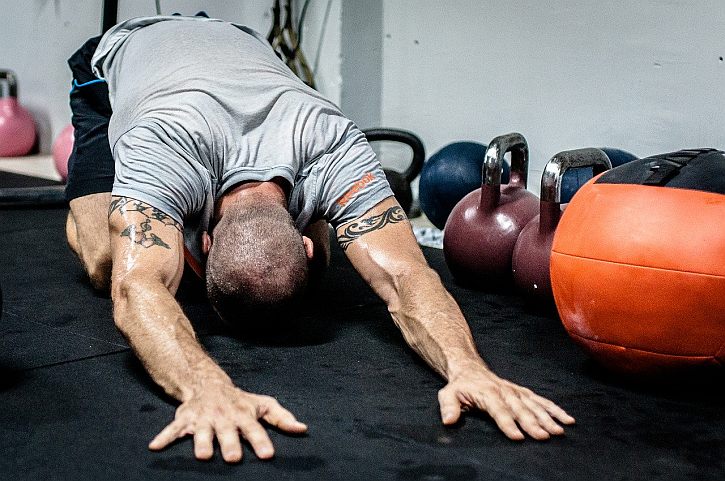Exercise is one of the most important ingredients for a healthy body; an active, productive mind and the reassuring sense of well-being. According to the American College of Sports Medicine (ACSM), ŌĆ£a program of regular exercise that includes cardiorespiratory, resistance, flexibility, and neuromotor exercise training beyond activities of daily living to improve and maintain physical fitness and health is essential for most adults.ŌĆØ

The increase in lifestyle-driven health issues is finally bringing about a greater awareness about the benefits of regular exercise. While we are a long-way off from being a society that exercises regularly, the proliferation of gyms and fitness clubs is probably an indication that we are stepping on the right track.
While any exercise is better than no exercise, and one can benefit to some extent by merely increasing oneŌĆÖs movements and reducing the sedentary time, such arbitrary/random exercise significantly limits the benefits. For us to derive long-term and sustained benefits from exercising, it is important that our exercise regimen is well-planned and structured. The workout plan has to be in harmony with oneŌĆÖs objectives/ fitness goals, present fitness level, current health situation and physical abilities.
In this context, the FITT principle provides a fairly good framework of the parameters of a good workout plan. Another important thing to remember is to combine strength training with cardio exercise and flexibility training for greater benefits.
┬Ā┬Ā┬Ā┬Ā┬Ā┬Ā┬Ā┬Ā┬Ā┬Ā┬Ā┬ĀUnderstanding the FITT principle
FITT is an acronym for Frequency, Intensity, Time and Type. Getting each of the four parameters that constitute FITT right- while recognising that these parameters will vary from individual to individual- will help you achieve your fitness goals most effectively and efficiently.
# 1. Frequency: HOW OFTEN?
According to the ACSM guidelines, the recommended frequency for aerobic exercise is 3-5 days/ week. If you are doing high intensity cardio exercise, then thrice-a-week will suffice; on the other hand, more frequent exercise sessions (like 5 days per week) is to be used in conjunction with moderate intensity exercise. As intensity levels increase, the frequency of the exercise program should ideally come down.
On the other hand, the frequency for strength training may be 2-3 times a week, with a gap of at least 48 hours between your work out sessions. If you prefer ŌĆśsplit trainingŌĆÖ i.e. work out different muscles/ different parts of the body on different days, you may increase your overall frequency of strength training exercise. The key here is to ensure that individual muscle groups are still targeted only two to three times per week.
As our body is designed to carry out a ŌĆ£repair and rebuildŌĆØ cycle during the rest and recovery phase, post-exercise, it is critical that the muscles get a sufficient break between exercise sessions.
DonŌĆÖt overlook this vital aspect while determining the frequency of your exercise. A Fitness consultant with a deeper understanding of physiology and bio-mechanics should be able to guide you correctly and design optimum frequency of your workouts that is aligned with your present fitness levels, your fitness goals and the number of days/ week you are willing to dedicate to exercising.
#2. Intensity: HOW HARD?
Go for a mix of low, moderate and high-intensity workouts
The visible results of exercise are a function of ŌĆśoverloadŌĆÖ and ŌĆśprogressionŌĆÖ i.e. how much load are you subjecting your body to above what it is usually used to and how you progress from one level to another. ┬ĀThis has a bearing to the intensity of your workout.
You can start by working at low to moderate intensity cardio exercises and then progress to shorter-duration, higher-intensity ŌĆśinterval trainingŌĆÖ up to a couple of times a week. Ideally, you should have a good mix of low, moderate and high-intensity training as this stimulates different energy systems in the body.
Similarly, for weight training, you should lift sufficient weight to complete the number of repetitions youŌĆÖve chosen. Intensity of resistance training is inversely related to the number of repetitions. Higher the resistance, fewer the number of reps. For general fitness, ACSM recommends completing 8-12 repetitions per set.
What you want to do is push your body to the right extent i.e. without under-working or over-working it that can potentially cause harm.
The key is to strike the right balance, motivate yourself to stretch to the right level and equally importantly, know exactly when to stop even if you may tend to get carried away!
#3. Time: HOW LONG?
Exercise for at least 30 minutes to an hour each session
It is a common question: how long should one exercise for? While the exact amount of time may depend on the intensity and type of exercise being performed, a 30-minute to an hour of exercise is quite reasonable. This duration applies to both cardio and strength training exercises.
If you are doing steady-state cardio, such as going on a run or working out on a treadmill, an hour of exercise is recommended. However, if you are doing higher-intensity exercises, 30 minutes or less will suffice.
#4. Type: WHAT KIND?
Variety is the spice of exercise
Depending on your individual goals and needs, you will typically require a mix of exercises including cardio, strength training, flexibility training etc.
You can opt for any exercise that can get your heart rate up for cardio, be it running, brisk walking, cycling etc. Similarly, for strength training, you could vary the type of resistance you are using to build muscle (bands, dumbbells, machines), or even opt for bodyweight exercises. In addition, make it a point to include multi-joint (e.g. bench press, squats) as well as single joint exercises (like bicep curl, knee extension)
Shake things up, often
Getting exercise into your daily routine is a matter of habit; but it is also important to regularly alter the regimen. Doing the same exercises at the same intensity and frequency affect results, due to several reasons.
As the body becomes used to a particular routine, the same quantum and intensity gives diminishing returns, because of the lack of ŌĆśoverloadŌĆÖ and ŌĆśprogressionŌĆÖ described earlier.
Moreover, one may have already lost some weight with the current regimen, which actually results in fewer calories being burnt now.
Equally important, boredom can set in which can kill your motivation to exercise, and this can lead to a vicious cycle.
So, shake things up a bit and alter the mix of one or more of the FITT parameters to continue to get maximum benefit from the exercise effort you are putting in.
As you achieve a certain level of fitness and aspire to reach the next level, it will be useful to remember that famous management book title: ŌĆśWhat got you here, wonŌĆÖt get you thereŌĆÖ. To grow, you will have to do something more and different.
Building your fitness and gaining muscle can be made easier with a wide variety of tools to help you. A weightlifting arm blaster will aid you if you want bigger arms, compare arm blasters to ensure you choose thecorrect one.
So get, set and be ŌĆ£FITTŌĆØ!
NOTE- FIND BELOW A COMPILATION OF FITT GUIDELINES FOR BOTH STRENGTH AND CARDIO TRAINING FOR A QUICK READ
| Cardio | Strength Training | |
| Frequency | Moderate: 3-5 times/ week, 30-minutes each
Intense: 3 times/ week, 10-20 mins each |
2-3 times a week (with at least 48 hours gap between work out sessions for a particular part of the body) |
| Intensity | Moderate intensity cardio exercises; progress to shorter-duration, higher-intensity exercises. ┬ĀHave a mix of low, moderate and high-intensity workouts. | Lift sufficient weights to meet the number of repetitions you are aiming for.
For general fitness, complete 8-12 repetitions per set. |
| Time | 30-60 minutes of ŌĆśsteady-stateŌĆÖ cardio such as a run or treadmill; beginners may start with 15-20 minute cardio sessionsŌĆ”.
For higher-intensity workouts, the duration may vary from 10-20 minutes. |
45-60 mins for a total body workout; shorter ŌĆō may be 30-mins- for ŌĆśsplit trainingŌĆÖ (work out targeted at only a specific part of your body) |
| Type | Turn to more than one type of cardio exercise: running, brisk walking, cycling, swimming etc. | Use different sources of resistance to work out muscles. Target both multi joint & single joint exercises, and opposing muscle groups (eg. abdomen and the lower back) |
References
- The F.I.T.T Principle for Great Workouts, Paige Waehner )
- Work outs for you, Lynn Bode
By MUNMUN GANERIWAL, Nutritionist & Fitness Consultant
Munmun Ganeriwal, founder of Yuktahaar┬Āis a well-known┬ĀMumbai-based Dietitian, Nutritionist & Fitness Consultant specializing in Indian food diets. An ardent advocate of local & traditional Indian food, she is IndiaŌĆÖs only professional to have acquired both a MasterŌĆÖs Degree in Nutrition Science and International Certification of Health Fitness Instructor from the American College of Sports Medicine. She has been studying & practising Iyengar Yoga. Over the last 15 years,┬Āshe┬Āhas worked as a Nutrition and Exercise Consultant with a diverse set of clients from all walks of life. Her Facebook page



FIIT is such a great principle. I agree that you need greater intensity to burn fats and lose weight. If only more people don’t think that losing weight is an overnight thing
I used to be big on long duration training sessions which lacked intensity which found to be the main ingredient for building fitness.
These days i rather do hard sprinting for 15 mins than run 10km.
Cool principle